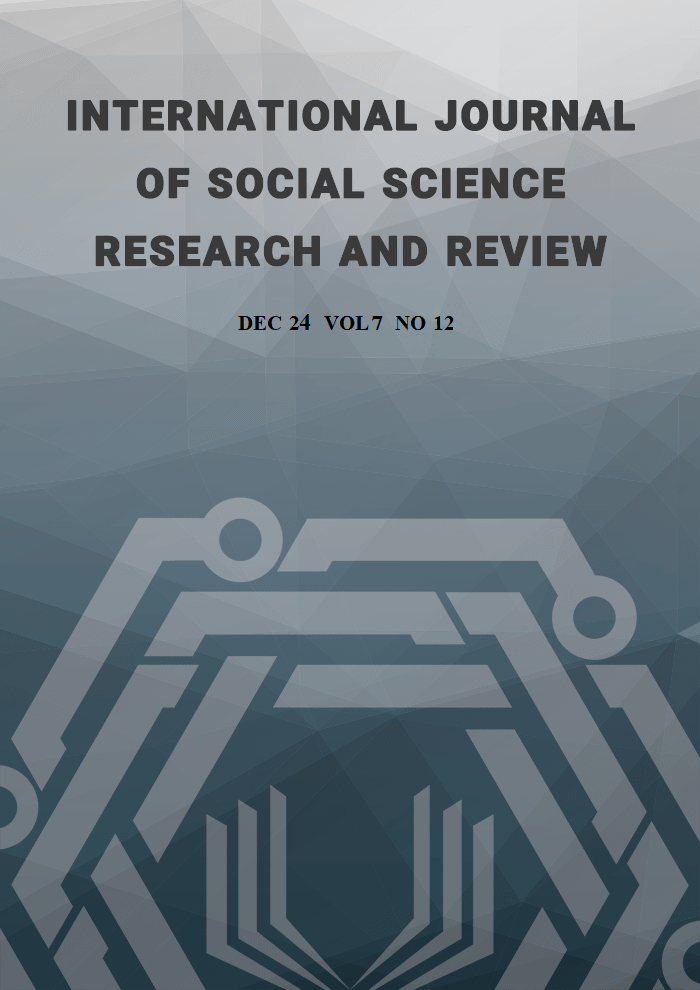Strengthening Crime Prevention Through Community Policing in West Nusa Tenggara Regional Police
Abstract
The purpose of this research is to examine the policy of strengthening crime prevention through community policing. (community policing). The method used in this research is a mixed method approach, combining descriptive methods with survey methods. The use of descriptive methods aims to discover and collect data that will be used to answer the research questions. This data source will be explored through the data collection techniques used, especially with the selected research informants according to the research informants' criteria. The second data source is secondary data in the form of data/information released by the police or institutions outside the police that can serve as supporting data in this research. Data analysis is conducted through data reduction, data presentation, and conclusion drawing. The findings of this research indicate that efforts to strengthen crime prevention through community policing in the jurisdiction of the West Nusa Tenggara police have been progressing well by implementing various preventive approaches and strategies, including optimizing functional units at the Polda, Polres, and Polsek levels that incorporate preventive aspects, prioritizing law enforcement over crime prevention, recognizing that crime prevention is the responsibility of the police, conducting direct prevention efforts, sharing knowledge with the community, and showing intent in budget and resource support.
References
[2] Cohen, L. E. (1979). Felson. M.(1979). Social change and crime rate trends: A routine activity approach. American Sociological Review, 44(4), 588-608.
[3] Felson, M. (1986). "Routine Activities, Social Controls, Rational Decisions, and Criminal Outcomes." In: D. Cornish and R.V.G. Clarke (eds.), The Reasoning Criminal. New York, NY: Springer-Verlag.
[4] Green, Jack (2007), The Encyclopedia of Police Science, New York: Routledge Groff, E. R. (2008). Adding the temporal and spatial aspects of routine activities: A further test of routine activity theory. Security Journal, 21(1-2), 95-116.
[5] Hamid, Supardi ( 2020), Pendekatan Kesisteman Pengelolaan SDM Polri dalam Penanganan Radikalisme dan Terorisme, Jakarta :PPITK, Sekolah Tinggi Ilmu Kepolisian.
[6] Hartono, M. R. (2016)"Upaya Pencegahan Kejahatan Oleh Direktorat Reserse Kriminal Umum (Ditreskrimum) Polda Jambi Melalui Tindakan Preventif." Lex Specialist, No. 24, pp. 70-84.
[7] Marie Skubak Tillyer, John E. Eck (2011) Getting a handle on crime: A further extension of routine activities theory. Security Journal 2011 (Vol. 24, 2, 179–193). Macmillan Publishers.
[8] Messner, S . F . and Blau, J . R . (1987) Routine leisure activities and rates of crime: A macro-level analysis, Social Forces 65: 1035 – 1052.
[9] Newton, A., & Felson, M. (2015). Editorial: Crime patterns in time and space: the dynamics of crime opportunities in urban areas. Crime science, 4 (1), 1-5.
[10] U.S. Department of Justice Office of Justice Programs National Institute of Justice, 1996.
[11] Visher, C.A., Weisburd, D. Identifying what works: Recent trends in crime prevention strategies. Crime, Law and Social Change 28, 223–242 (1997). https://doi.org/10.1023/A:1008229431999 [https://www.ncbi.nlm.nih.gov/pmc/articles/PMC9247632/](https://www.ncbi.nlm. nih.gov/pmc/articles/PMC9247632/).
[12] [https://www.researchgate.net/publication/339338133_Following_their_Lead_Police_Perceptions_ and_their_Effects_on_Crime_Prevention](https://www.re searchgate.net/publication/339338133 _Following_their_Lead_Police_Perc eptions_and_their_Effects_on_Crime_Prevention).
[13] [https://cipc-icpc.org/wp-.content/uploads/2019/08/Key_Developments Issues and_Practices._T he_Role_of_the_Police_in_Crime_Prevention_ANG.pdf](https://cipc-icpc.org/wp-content/ uploads /2019/08/Key_DevelopmentsIssuesand_Practices._The_Role_of_the_Police_in_ Crime_ Prevention _ANG.pdf).
[14] https://www.unodc.org/lpo-brazil/en/crime/index.html.
[15] https://www.unodc.org/lpo-brazil/en/crime/index.html https://www.campbellcollaboration.org/.
[16] https://nij.ojp.gov/.ditionBicknel, Jane, David.

This work is licensed under a Creative Commons Attribution-NonCommercial-NoDerivatives 4.0 International License.
Copyright for this article is retained by the author(s), with first publication rights granted to the journal. This is an open-access article distributed under the terms and conditions of the Creative Commons Attribution license (https://creativecommons.org/licenses/by-nc-nd/4.0/).





